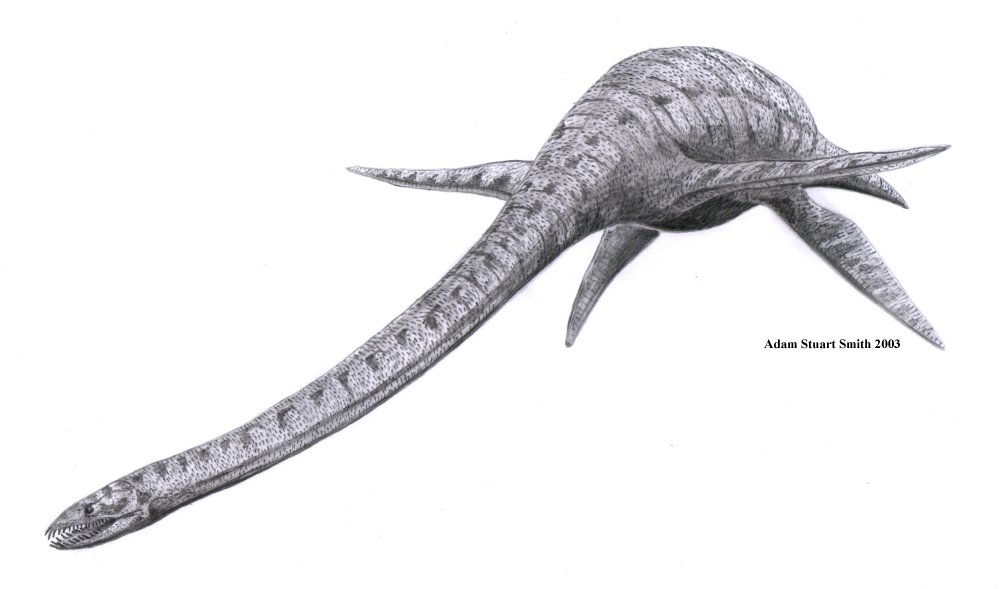Were Mesozoic Sea Monsters Warm-Blooded?
Warm-bloodedness is the ability of an animal to maintain their body temperature at a roughly constant level, regardless of the environmental temperature. However, this term has now fallen out of favour in lieu of more specific definitions of thermoregulation.
Endothermy is the ability to regulate body temperature via internal mechanisms that generate heat such as muscle shivering or fat burning. In other words, the concept is similar to an internal “furnace”.
Homeothermy is the ability to maintain a constant internal body temperature that does not depend on the external temperature.
Tachymetabolism refers to the ability to control body temperature by having a high resting metabolism.
The reason why there are 3 definitions for warm-bloodedness is because scientists have discovered that not all traditionally warm-blooded animals (mammals and birds) fit into all categories. On the flipside, some “cold-blooded” animals such as the bluefin tuna and mackerel shark display some features of “warm-bloodedness”
In the Mesozoic era, while the dinosaurs conquered the land, 3 general groups of fascinating reptiles ruled the seas; the dolphin-like ichthyosaurs, the long-necked plesiosaurs and the serpentine mosasaurs. A study in the June 11th issue of Science suggests that these top-tier sea creatures could have displayed some features of warm-bloodedness. How did they arrive at this tantalizing conclusion?
Well, warm-bloodedness leaves clues even in the fossils of long dead animals. The ratio of various isotopes of oxygen are preserved in the phosphate minerals of tooth enamel. Isotope geochemist Christopher Lecuyer then compared the proportion of oxygen-18 isotope in the tooth enamels of ichthyosaurs, plesiosaurs and mosasaurs to those of the presumably cold-blooded fish in the same geologic strata.
What they found was that the marine reptiles had a higher proportion of oxygen-18 compared to the cold-blooded fish. This suggests that they had some degree of warm-bloodedness. The researchers concluded that ichthyosaurs and plesiosaurs had body temperatures of about 35-39 degrees Celcius, which is a whopping 20 degrees warmer than the sea temperature. Like tuna and swordfish, which are homeothermic and endothermic, ichthyosaurs and plesiosaurs could have generated heat from the muscles in their body.

Elasmosaurus, a plesiosaur, and one of my favourite prehistoric creatures.

Tylosaurus, a mosasaur, chomps down on a meal in the Late Cretaceous.

A school of Shonisaurus, the largest ichthyosaur discovered, roam the late Triassic seas
The marine sea reptiles were a huge evolutionary success, dominating the mesozoic seas. Warm-bloodedness may have played a key role to the success of ichthyosaurs and plesiosaurs because studies of body plans have suggested that these creatures were pursuit predators that needed to stay active to hunt. The evidence for mosasaurs is more equivocal but still enough to conclude that they had some degree of temperature control. This could be explained by the idea that mosasaurs were ambush predators that required less energy. Nevertheless, this study gives us enticing proof of how warm-bloodedness evolved in these majestic aquatic reptiles from their cold-blooded land cousins
A Slew of New Ceratopsians
I just found out that the past week has been a busy busy week for ceratopsian discoveries. Ceratopsians are among the last wave of magnificent herbivorous dinosaur groups to emerge in the late Cretaceous.

This is Coahuilaceratops magnacuerna (Koh-WHE-lah-SARA-tops mag-NAH-KWER-na) which is the first horned dinosaur unearthed in Mexico. Its latin name means “great horned face from Coahuila”. The most unique feature of this species which lived 72 mya is that it had horns up to 4 feet long, which is longer than any other ceratopsian.

The 1 metre long Ajkaceratops kozmai is small in stature but it represents the first ceratopsian discovery in Europe. In the late Cretaceous, Europe was an isolated island landmass and this find is evidence of island dwarfism and the migration of ceratopsians from Asia. This ceratopsian is probably a protoceratopsid related to Magnirostris.

Sinoceratops zhuchengensis is another important discovery because before this ceratopsids have been exclusively found in North America. This late Cretaceous dinosaur also blurs the distinction between 2 subfamilies of ceratopsids, the chasmosaurines and the centrosaurines.

This fearsome looking creature from southern Utah is appropriately named Diabloceratops eatoni (Latin for devil horned face). At 80 million years old, it is also one of the oldest ceratopsids. Has to be one of the coolest frill horns in the dinosauria.
Last but not least is this stunning specimen from the Montana-Alberta border. Christened Medusaceratops lokii for its curved, snakelike frill-horns which resembled the head of Medusa, as well as its arching brow horns which are reminiscent of the Norse God Loki, this beast lived 78 million years ago and grew up to 20 feet long.

